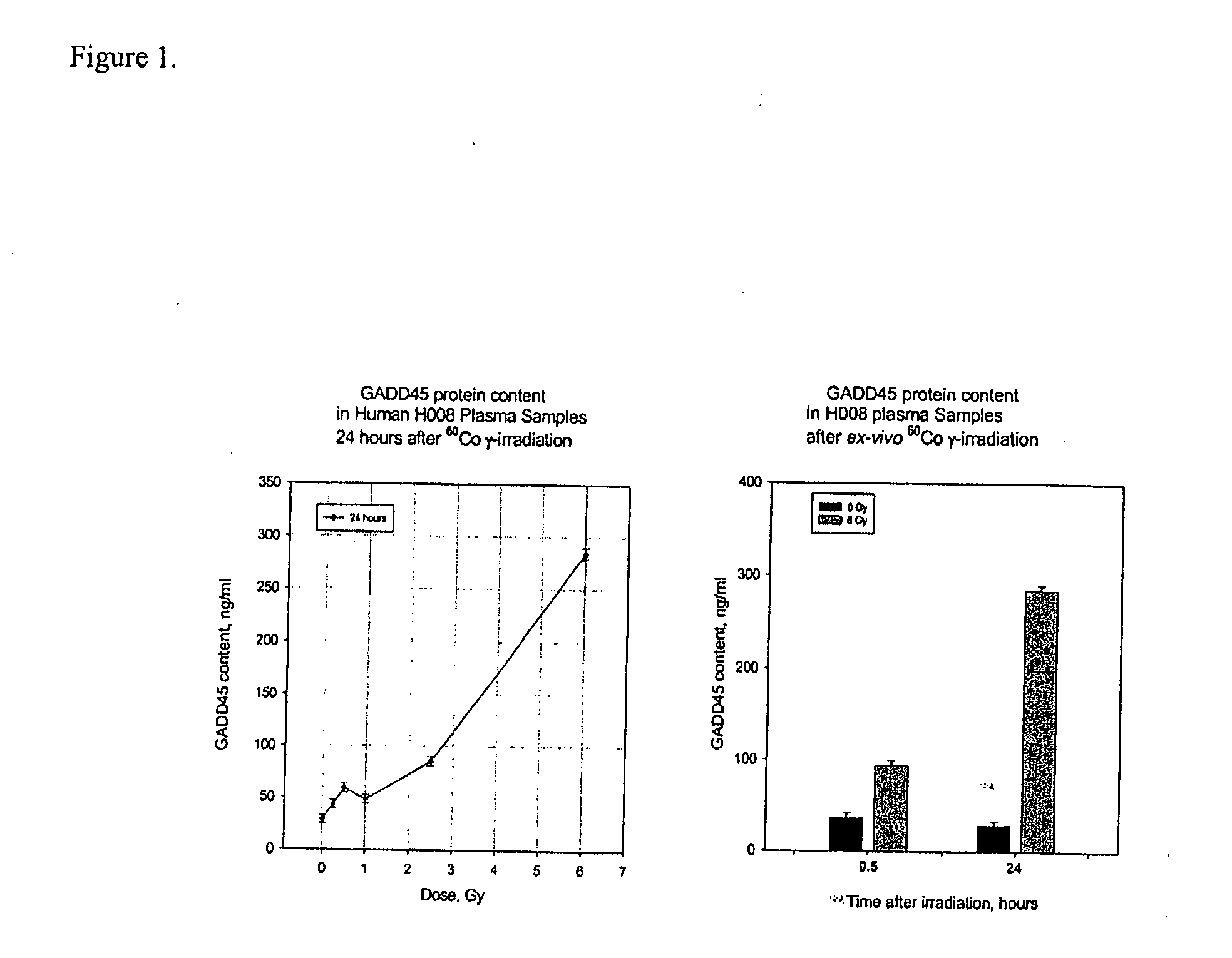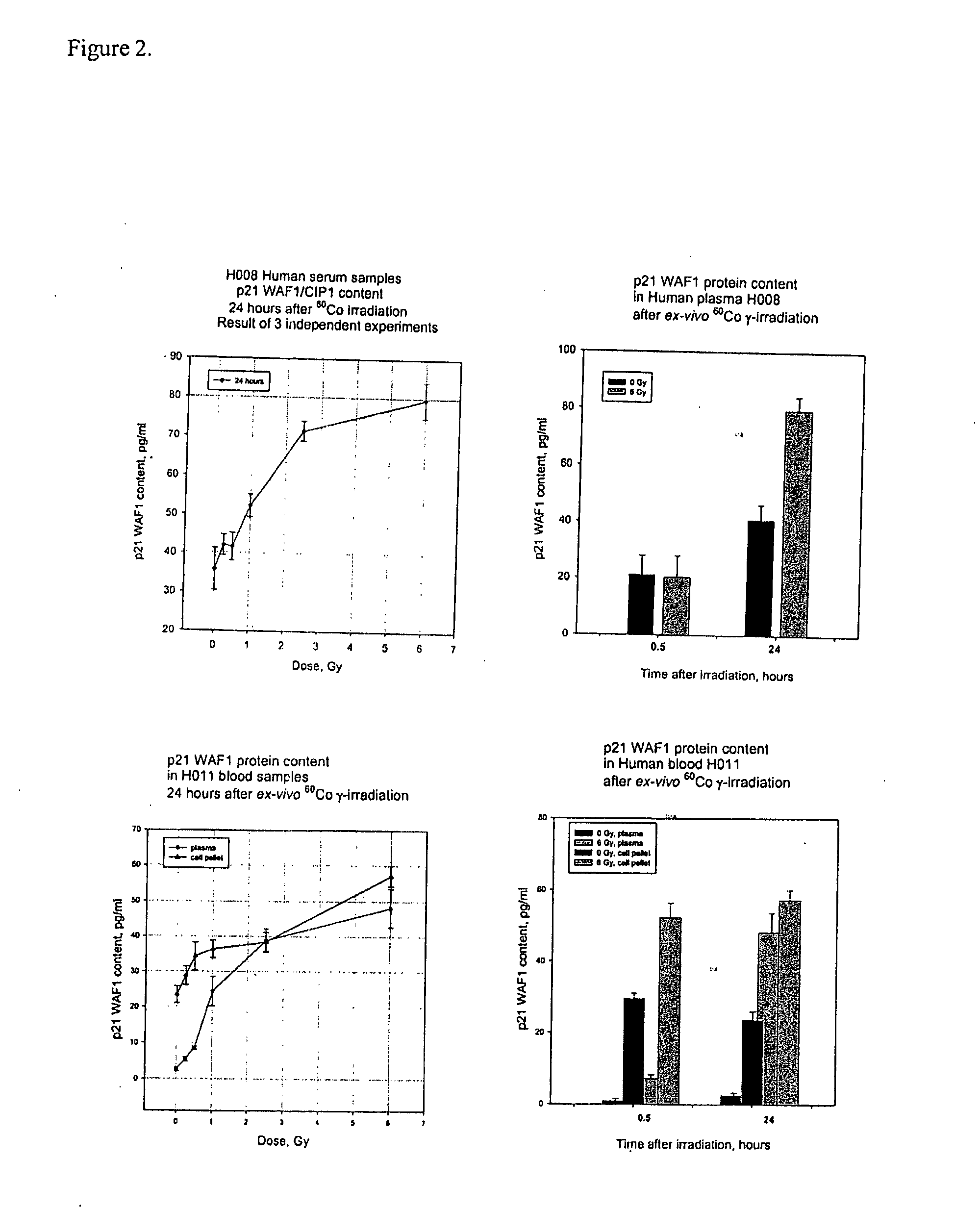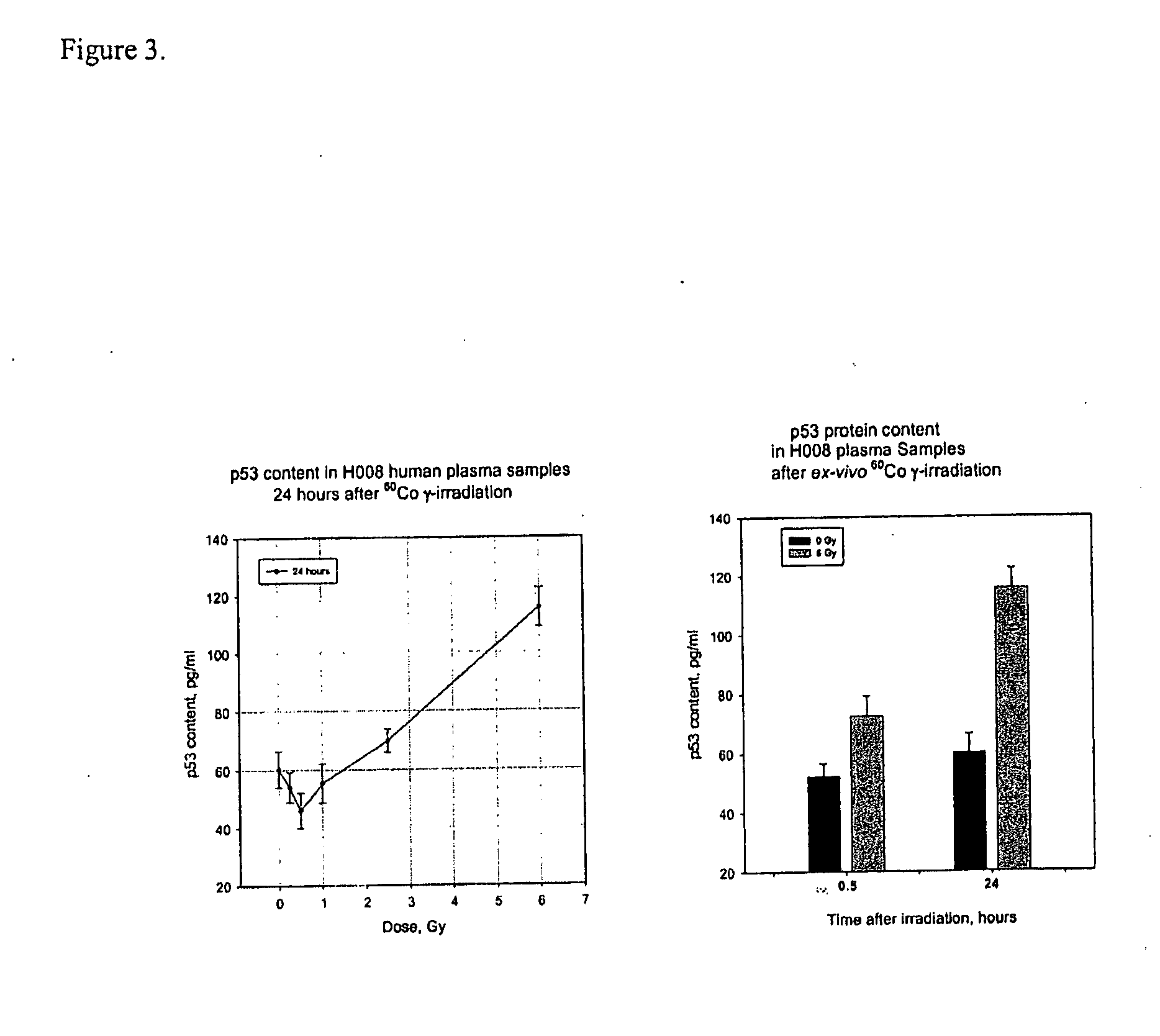Biomarker panels for assessing radiation injury and exposure
a biomarker and radiation injury technology, applied in the field of rapid assessment of radiation injury and radiation exposure, can solve the problems of insufficient information provided to make an adequate diagnosis of the level of radiation exposure of subjects, lack of quantitative indices of rapid identification of exposed individuals, and insufficient quantitative indices of current methodologies
- Summary
- Abstract
- Description
- Claims
- Application Information
AI Technical Summary
Benefits of technology
Problems solved by technology
Method used
Image
Examples
example 1
[0080]Radiation responsive protein biomarkers were measured using ELISA and as well as a novel and high-throughput microsphere-based multi-analyte Luminex assay system. An in vitro model system of human peripheral blood lymphocytes showed radiation-responsive changes in the expression of GADD45α, p21 WAF1 / CIP1, p53, and IL-6 with a progressive time- and dose-dependent increase (FIGS. 1-5). Protein levels were determined using a calibration curve with a reference standard. Symbols represent the mean of three independent experiments and error bars the standard error of means.
[0081]Induction of these proteins by low-dose radiation has a different dependence on the time after irradiation than induction by high doses. Dose dependent increases in presented data show the potential utility of these protein biomarkers to detect radiation exposure. A retrospective correlation analysis led to the finding of strong correlations between different combinations of pres...
example 2
Murine In Vivo Radiation Model
[0082]FIG. 8 shows the IL-6 content, and FIG. 9 shows the serum amyloid A content, in blood samples from mice exposed to Co-60 gamma rays at several sampling time-points. FIG. 10 shows results obtained using blood samples from mice exposed to Co-60 gamma rays for a broad dose range (0-7 Gy) and range of time points (6-96 hr).
example 3
Non-Human Primate (Rhesus Macaques) In Vivo Radiation Model
[0083]Blood samples from 10 rhesus monkeys exposed to 250 kVp x-rays (0.13 Gy / min) at several sampling time-points were obtained. FIG. 11 shows ELISA data (mean±SEM) for p21 WAF1 / CIP1, salivary α-amylase, CRP, and IL-6 protein content measured immediately prior to 6-Gy whole-body irradiation and 24 and 48 h after exposure.
[0084]Data analyzed with use of multivariate discriminant analysis established very successful separation of non-human primate groups: 100% discrimination power for animals with correct classification for separation between groups before and 1 day after irradiation and 95% discrimination power for animals with correct classification for separation between groups before and 2 days after irradiation. (FIG. 12). Clear separation of animals before and after irradiation can be seen. The plot in FIG. 13 presents a result of classification and discrimination analyses for different combinations of biomarkers for 1 ...
PUM
| Property | Measurement | Unit |
|---|---|---|
| time | aaaaa | aaaaa |
| Acute Phase | aaaaa | aaaaa |
| physical dosimetry | aaaaa | aaaaa |
Abstract
Description
Claims
Application Information
 Login to View More
Login to View More - R&D
- Intellectual Property
- Life Sciences
- Materials
- Tech Scout
- Unparalleled Data Quality
- Higher Quality Content
- 60% Fewer Hallucinations
Browse by: Latest US Patents, China's latest patents, Technical Efficacy Thesaurus, Application Domain, Technology Topic, Popular Technical Reports.
© 2025 PatSnap. All rights reserved.Legal|Privacy policy|Modern Slavery Act Transparency Statement|Sitemap|About US| Contact US: help@patsnap.com



